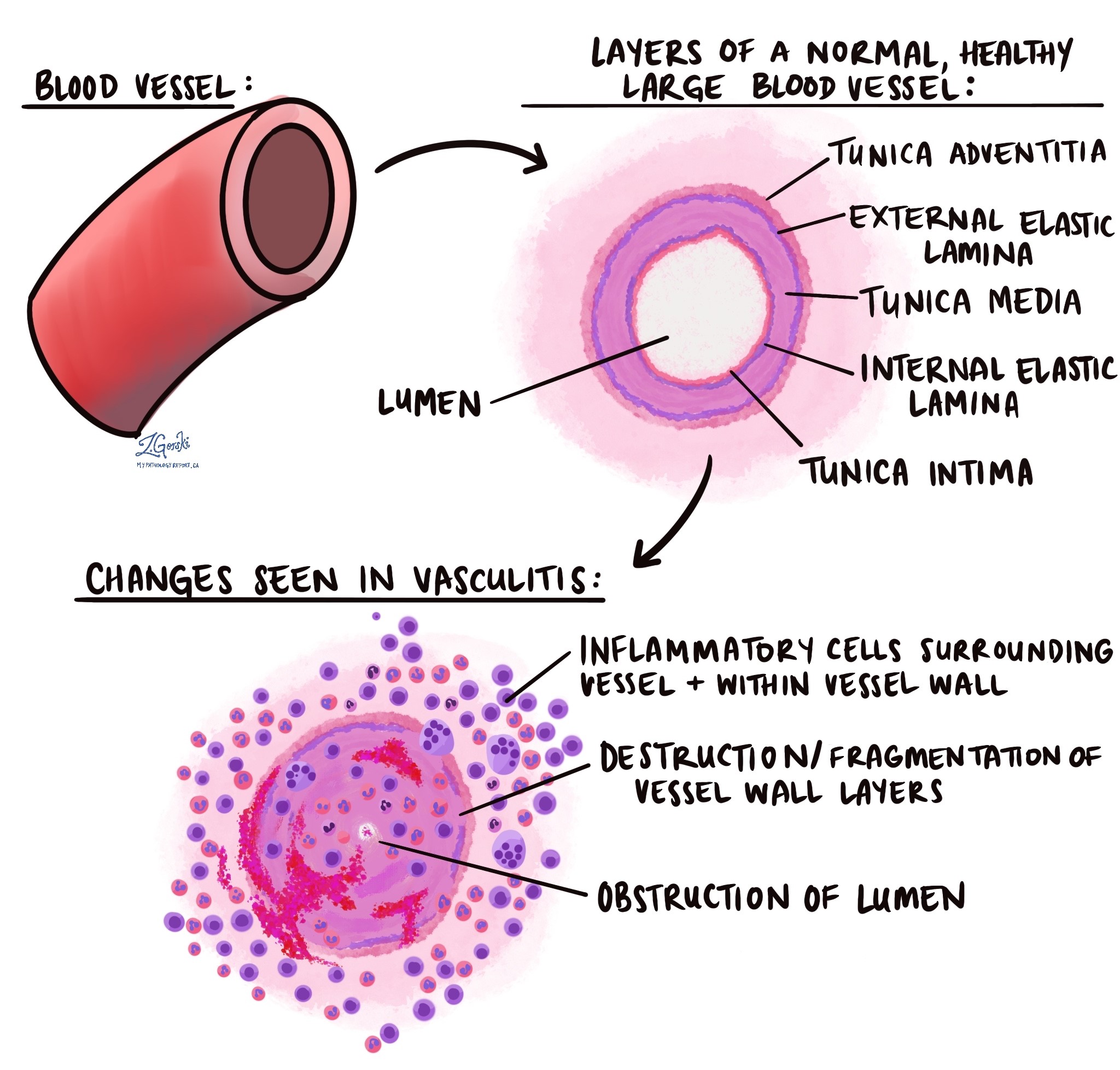Vasculitis is a condition involving inflammation of the blood vessels. These include arteries, veins, and small capillaries, which carry blood to and from your organs and tissues. When these vessels become inflamed, they can become damaged and may not function properly, affecting blood flow throughout the body. Vasculitis can range from mild to severe, depending on which vessels and organs are involved.
What are the symptoms of vasculitis?
Symptoms of vasculitis can vary widely because blood vessels throughout the body may be affected.
Common symptoms include:
-
Fever.
-
Fatigue and weakness.
-
Muscle and joint pain.
-
Skin rashes or ulcers.
-
Weight loss.
-
Numbness or tingling in the hands and feet.
-
Difficulty breathing or chest pain.
-
Kidney problems or changes in urination.
-
Headaches, confusion, or vision problems (if vessels in the brain or eyes are involved).
The symptoms often depend on the specific type of vasculitis and which organs are affected.
What causes vasculitis?
The exact cause of vasculitis isn’t always known. However, it’s often related to problems with the body’s immune system. In many cases, the immune system mistakenly attacks blood vessels, leading to inflammation. This can happen on its own or may be associated with other conditions, such as:
-
Autoimmune diseases (e.g., rheumatoid arthritis, lupus).
-
Certain infections (e.g., hepatitis B or C).
-
Allergic reactions to medications or chemicals.
-
Rarely, certain types of cancer.
How is vasculitis classified?
Doctors classify vasculitis based mainly on the size of the blood vessels affected.
Common categories include:
-
Large-vessel vasculitis: Affects the aorta and other large arteries. Examples include Giant cell arteritis and Takayasu arteritis.
-
Medium-vessel vasculitis: Involves medium-sized arteries supplying internal organs, such as Polyarteritis nodosa and Kawasaki disease.
-
Small-vessel vasculitis: Targets small blood vessels like capillaries. Examples include Granulomatosis with polyangiitis, microscopic polyangiitis, and Henoch-Schönlein purpura.
This classification helps doctors determine the best treatment approach.
How is this diagnosis made?
Doctors usually diagnose vasculitis by evaluating symptoms, performing a physical examination, and reviewing laboratory test results. These may include blood tests to detect signs of inflammation or autoantibodies. Imaging studies such as ultrasound, X-ray, CT, or MRI scans may also be performed to look for damaged vessels. In many cases, doctors will perform a biopsy, taking a small sample of affected tissue for examination under a microscope.
What does a biopsy with vasculitis show?
When examined under the microscope, a biopsy of tissue affected by vasculitis shows inflammation within or around blood vessel walls. Pathologists look for signs like swelling, white blood cells infiltrating vessel walls, damage or thickening of vessel walls, and sometimes areas of bleeding (hemorrhage). These findings confirm the diagnosis of vasculitis and help identify the specific type.

How does vasculitis damage a blood vessel?
Vasculitis damages blood vessels through inflammation. When the immune system mistakenly attacks blood vessels, inflammation leads to swelling, thickening, and weakening of the vessel walls. Over time, this damage can narrow or even block vessels, reducing blood flow. In severe cases, blood vessels may become so damaged that they bleed, form blood clots, or burst, causing significant tissue or organ damage.
What types of blood vessels are affected?
Vasculitis can affect any type of blood vessel in the body, including arteries, veins, and capillaries. The symptoms and seriousness of the disease depend on the specific vessels involved.
-
Large arteries, such as the aorta and its major branches. Types of vasculitis affecting these vessels include giant cell arteritis and Takayasu arteritis.
-
Medium-sized arteries supplying organs like the kidneys and heart. Conditions like polyarteritis nodosa and Kawasaki disease involve these arteries.
-
Small arteries, veins, and capillaries. Examples include granulomatosis with polyangiitis, microscopic polyangiitis, Henoch-Schönlein purpura (IgA vasculitis), and Churg-Strauss syndrome (eosinophilic granulomatosis with polyangiitis).
Because vasculitis can involve vessels of different sizes, the disease can cause a wide range of symptoms and complications.


